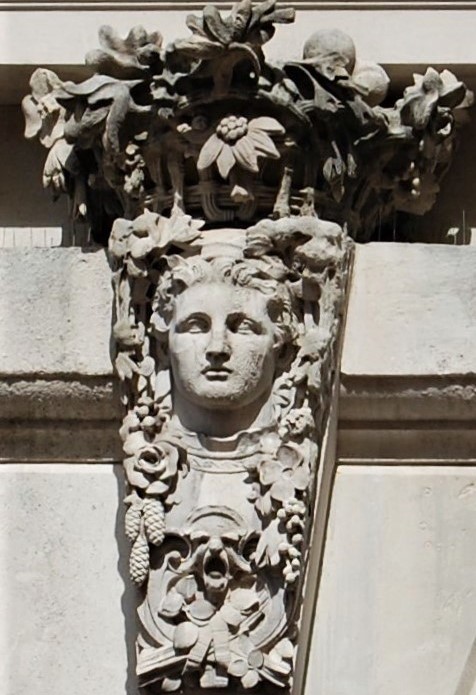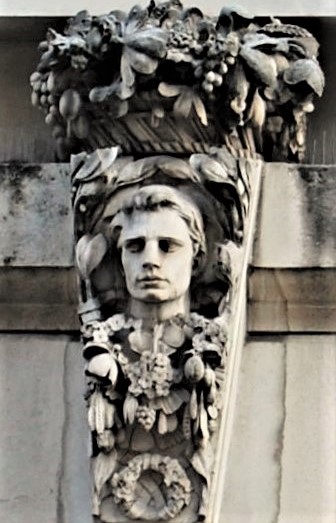Blog
6 October 2022
All the images show carvings on the exterior of Britannic House
During the early summer of 1912 the construction of North Court was in full swing, with the cloister already completed. The architect, Leonard Stokes, intended to furnish the entire building with fine-quality carving, but when the full extent of his schemes became clear, the college authorities were perturbed. Faced with the challenge of trying to rein in the architect, the Bursar tried the tack of emphasising the governing body’s profound ‘dread of ornament’, but Stokes remained determined that the building should be completed to his exact and ‘very carefully considered’ designs.
The original North Court cloister had seven arches (there are now only six, but that is another story…) and Stokes planned to place a highly decorative keystone on each. One carving had been completed, and another was almost finished, when the Master, Peter Giles, made an impromptu inspection of the site. Taken aback by what he found, he immediately interrupted the Bursar’s holiday to inquire ‘who and what the figures are which are being put on the keystones of the Cloister arches in the North Court…I don’t mind the heads, though I have no idea who they are intended to represent, but the extraordinary collections of flowers and fruit from which the heads peep forth seem altogether out of keeping with the rest of the structure and to deteriorate its general effect very much’.
When Stokes learned of the Master’s consternation, he immediately ‘stopped the carver’, but continued to argue passionately for the retention of his ‘essential’ keystones, which were intended to represent the Seven Ages of Man (presumably Shakespeare’s infant, schoolboy, lover, soldier, etc). Stokes pointed out that ‘a certain amount of work, such as models, etc. has already been done…in round figures this amounts to about £50’, but the college, unmoved, insisted that the keystones be either plain, or merely display coats of arms of college benefactors. Stokes grudgingly agreed to the latter, at which point the ‘Seven Ages’ were quietly removed.
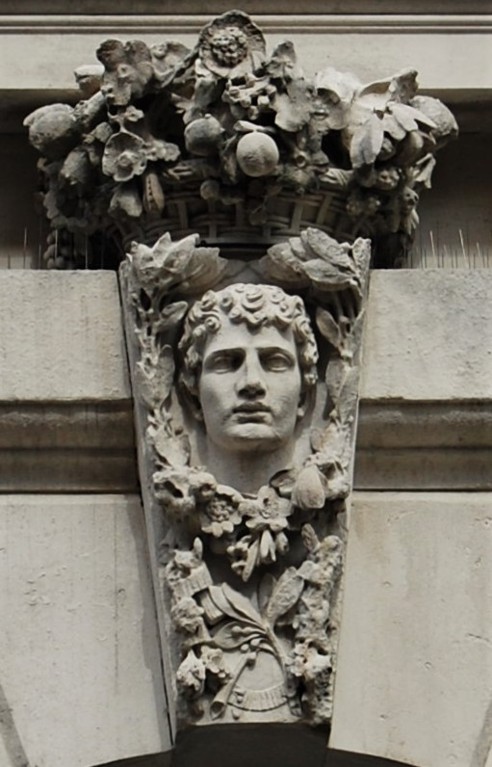
The identity of the carver whose work was so rudely interrupted is unfortunately not recorded in the college archives, but there is a good chance that it was Abraham Broadbent, for he certainly executed the sculptures on the North Court Porters' Lodge (as reported in the Journal of the Royal Society of Arts, Vol. 70, 1921). Born in Shipley, the son of a master carver, Abraham later lived and worked in London. Although he died in 1919, his son Eric continued the family tradition, becoming a fine stone sculptor in his own right. Some marvellous examples of Eric’s work can be seen on Edwin Lutyens’ lavishly decorated 1927 Britannic House in Finsbury Circus, London, near Liverpool Street station. Of particular interest, to us, are the seventeen keystones on the ground floor window and door arches, which show the heads of males of varying ages surrounded by ornate arrangements of fruit and flowers.
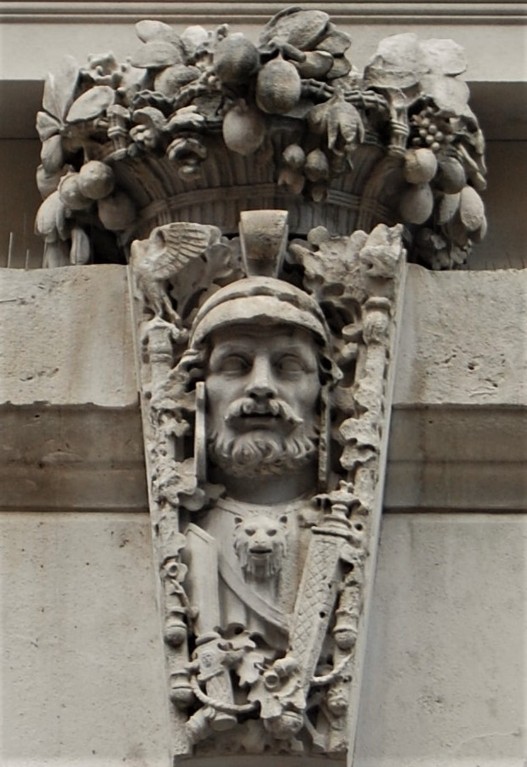
Could some of the Britannic House carvings have been based on (or in two cases, be) the ‘Seven Ages’ models and sculptures intended for Emmanuel, that had so dismayed Peter Giles in 1912? Several incorporate motifs that allude to Shakespeare’s verses, such as mistletoe (lover), sword (soldier) and fasces (judge). If these flamboyant sculptures do indeed include North Court’s ‘lost’ carvings, their rejection by the college can only be regarded as highly regrettable, at least by those of us who share Stokes’ opinion that the exuberant keystones would have ‘added greatly to the interest of the court’.
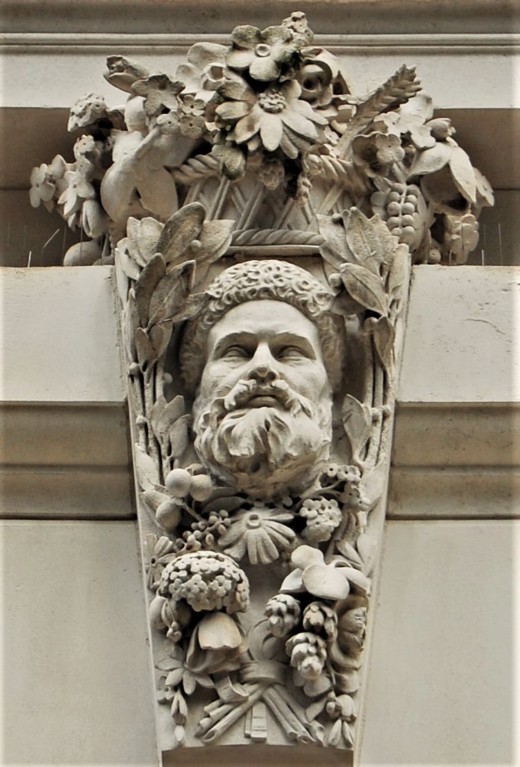
Amanda Goode, Emmanuel College Archivist

